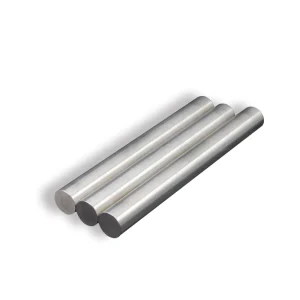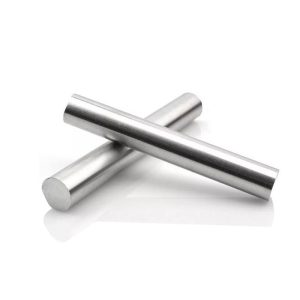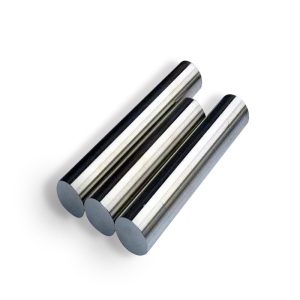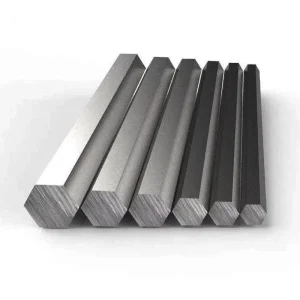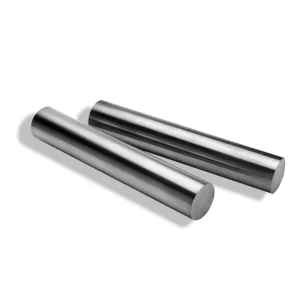As of July 2025, stainless steel prices range from $1.10 to $1.65 per pound for standard grades, with premium alloys commanding higher rates. Current market conditions show 304 stainless steel priced between $2,500 and $3,200 per ton, translating to approximately $1.25-$1.60 per pound depending on regional factors and order quantities. The volatility in nickel prices, expected to hover between $15,000–$20,000 per metric ton in 2025, continues to drive pricing fluctuations across all stainless steel grades.
Understanding Stainless Steel Pricing Fundamentals
Having worked in metals procurement for over fifteen years, I’ve witnessed dramatic shifts in stainless steel pricing patterns. The foundation of stainless steel pricing rests on three primary components: base metal costs, alloy surcharges, and processing premiums.
Base metal pricing reflects the underlying cost of iron and steel production. This component typically represents 40-50% of final stainless steel pricing. Raw material costs fluctuate based on iron ore prices, energy costs, and regional supply-demand dynamics.
Alloy surcharges constitute the most volatile pricing element. Nickel and chromium surcharges can swing dramatically within monthly periods, directly impacting final pricing. These surcharges are published monthly by major producers and form the basis for contract negotiations.
Processing premiums account for manufacturing, transportation, and distributor margins. These costs remain relatively stable but vary significantly by product form, finish requirements, and order specifications.
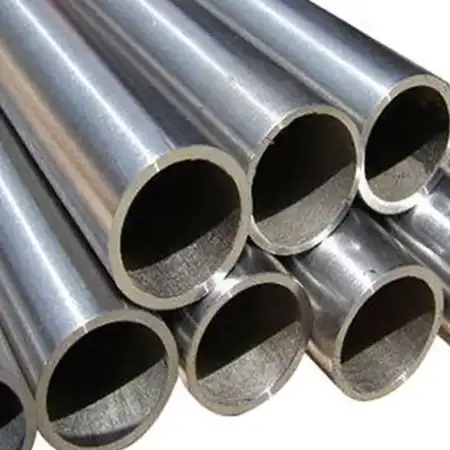
Global Stainless Steel Price Comparison 2025
Understanding regional price variations helps buyers make informed sourcing decisions. Here’s a comprehensive comparison of current stainless steel prices across major markets:
| Region | 304 Grade ($/lb) | 316 Grade ($/lb) | Market Conditions | Supply Status |
|---|---|---|---|---|
| United States | $1.25-$1.60 | $1.45-$1.85 | Moderate demand | Adequate supply |
| European Union | $1.35-$1.70 | $1.55-$1.95 | Strong industrial demand | Tight supply |
| China | $1.10-$1.45 | $1.30-$1.65 | Mixed regional demand | Surplus capacity |
| Japan | $1.40-$1.75 | $1.60-$2.00 | Steady consumption | Limited domestic production |
| India | $1.15-$1.50 | $1.35-$1.70 | Growing infrastructure demand | Expanding capacity |
| Southeast Asia | $1.20-$1.55 | $1.40-$1.75 | Rising construction activity | Import dependent |
Prices represent mill base plus current alloy surcharges for standard commercial quantities.
Factors Driving 2025 Stainless Steel Pricing
Several interconnected factors shape current stainless steel pricing dynamics. Raw material costs dominate pricing considerations, with nickel representing the single largest variable cost component for austenitic grades.
Nickel Market Dynamics: Indonesian mining regulations and electric vehicle battery demand continue pressuring nickel availability. Supply constraints from major producing regions have maintained elevated price levels throughout 2025. The shift toward nickel-intensive battery technologies creates competition between stainless steel and EV manufacturers for available supply.
Energy Cost Fluctuations: European stainless steel producers face particular challenges from volatile energy costs. Natural gas pricing volatility affects both melting operations and electricity generation, creating regional price disparities.
Global Trade Policies: Tariff structures and trade agreements significantly impact regional pricing. Recent changes in US-China trade relationships have redirected supply chains, affecting traditional pricing patterns.
Environmental Regulations: Increasingly stringent environmental standards require capital investments in cleaner production technologies. These costs are gradually incorporated into pricing structures across all producing regions.
Stainless Steel Grade Specifications and Pricing
Different stainless steel grades command varying price premiums based on their alloy content and performance characteristics. Understanding these differences helps buyers optimize material selection for specific applications.
304 Stainless Steel: The workhorse of stainless steel grades contains approximately 18% chromium and 8% nickel. This austenitic grade offers excellent corrosion resistance for most applications while maintaining cost effectiveness. Monthly average spot prices for stainless steel 304 moved from about 1908 USD/MT in January’25 to around 1921 USD/MT in March’25, showing relative stability compared to premium grades.
316 Stainless Steel: Enhanced corrosion resistance through molybdenum addition makes 316 grade essential for marine and chemical environments. The additional 2-3% molybdenum content typically adds $0.20-$0.30 per pound to base 304 pricing.
Duplex Grades: 2205 and other duplex stainless steels offer superior strength characteristics while reducing nickel content. These grades often provide cost advantages in structural applications despite higher base pricing.
Specialty Alloys: Super austenitic and super duplex grades command premium pricing ranging from $3.00-$8.00 per pound depending on specific chemistry requirements.
Case Study: Automotive Industry Stainless Steel Procurement
A major automotive exhaust system manufacturer recently faced significant procurement challenges that illustrate current market dynamics. This tier-one supplier produces exhaust components for multiple OEM customers across North America.
Challenge Overview: The company required 2,400 tons annually of 409 ferritic stainless steel for exhaust pipe applications. Traditional sourcing from domestic mills faced pricing pressures from increasing scrap costs and energy expenses.
Market Analysis: During early 2025, domestic 409 stainless steel pricing increased 15% year-over-year due to higher chromium costs and domestic mill capacity constraints. Import alternatives from Asia offered 8-12% cost savings but presented supply chain complexity and quality consistency concerns.
Strategic Response: The procurement team implemented a dual-sourcing strategy combining domestic supply for 70% of requirements with qualified Asian suppliers for remaining volume. This approach balanced cost optimization with supply security.
Negotiation Tactics: Long-term contracts with quarterly price adjustments based on published alloy surcharges provided predictability while maintaining competitive pricing. Volume commitments secured preferential pricing tiers and guaranteed allocation during tight supply periods.
Results Achieved: The diversified sourcing strategy achieved 6% annual cost reduction while maintaining quality standards and supply reliability. Risk mitigation through geographic diversification proved valuable during regional supply disruptions.
Lessons Learned: Successful stainless steel procurement requires balancing multiple factors beyond unit pricing. Quality consistency, supply reliability, and total cost of ownership often outweigh pure price considerations in critical applications.
Market Outlook and Price Projections
Looking ahead through 2025, several trends will shape stainless steel pricing. Supply-side constraints from environmental regulations and capacity limitations suggest continued price support for most grades.
Demand patterns show mixed signals across end-use sectors. Construction and infrastructure spending remains robust in developing markets, supporting structural grade consumption. However, industrial equipment demand faces headwinds from economic uncertainty in developed economies.
The transition toward sustainable materials creates both challenges and opportunities. Recycled content requirements may increase scrap stainless steel values while potentially reducing primary production demand.
Regional Production Capacity and Supply Chains
Global stainless steel production capacity continues expanding, primarily in Asian markets. China maintains the largest production base, accounting for approximately 60% of global capacity. However, environmental restrictions and energy policies increasingly constrain Chinese production growth.
Indonesian nickel processing investments create new supply chain dynamics. Integrated nickel pig iron production facilities reduce traditional nickel import dependence while creating new competitive pressures on established producers.
European producers focus on specialty grades and value-added products as commodity production migrates to lower-cost regions. This specialization strategy maintains profitability despite higher operating costs.
Quality Standards and Certification Requirements
Stainless steel pricing often reflects certification and quality requirements specific to end-use applications. Understanding these requirements helps buyers avoid over-specification while ensuring compliance.
ASTM Standards: American Society for Testing and Materials specifications define chemical composition, mechanical properties, and testing requirements. Premium pricing applies for certified compliance with stringent specifications.
EN Standards: European standards often require additional testing and documentation, particularly for pressure vessel and structural applications. These requirements typically add $0.05-$0.15 per pound to base pricing.
Industry-Specific Certifications: Aerospace, pharmaceutical, and food processing applications demand specialized certifications that command significant premiums over standard commercial grades.
Purchasing Strategies and Contract Structures
Effective stainless steel procurement requires understanding various contract structures and pricing mechanisms. Each approach offers different advantages depending on usage patterns and risk tolerance.
Spot Market Purchases: Immediate availability at current market pricing suits low-volume or irregular requirements. However, price volatility creates budget uncertainty for ongoing programs.
Term Contracts: Fixed-quantity commitments with monthly price adjustments based on published surcharges provide supply security while maintaining market-responsive pricing.
Price Protection Programs: Some suppliers offer price cap arrangements or hedging mechanisms to limit upside exposure during volatile periods. These programs typically require premium payments or minimum volume commitments.
Frequently Asked Questions
Q1: Why do stainless steel prices fluctuate so dramatically compared to carbon steel? Stainless steel pricing volatility stems primarily from alloy content, particularly nickel and chromium. These raw materials experience significant price swings based on global supply-demand dynamics, mining disruptions, and competing end-use demand from other industries. Carbon steel contains minimal alloying elements, making it less susceptible to specialty metal price fluctuations. The alloy surcharge component can represent 40-60% of total stainless steel costs, creating direct exposure to commodity price movements.
Q2: Is it more cost-effective to buy stainless steel scrap or new material for manufacturing applications? The decision depends on specific application requirements and current market conditions. Stainless steel scrap typically costs 10-30% less than prime material but may require additional processing to meet specification requirements. Critical applications requiring certified chemistry and mechanical properties generally necessitate prime material. However, many structural and non-critical applications can effectively utilize qualified scrap material, providing significant cost savings while maintaining adequate performance.
Q3: How do international shipping costs affect stainless steel pricing in 2025? Shipping costs have become a more significant factor in global stainless steel pricing following supply chain disruptions and increased freight rates. Ocean freight typically adds $50-$150 per ton depending on shipping routes and container availability. For lower-value grades, shipping costs can represent 5-10% of delivered pricing, making regional sourcing more attractive. Premium grades with higher unit values absorb transportation costs more easily, maintaining global sourcing viability.
Q4: What’s the price difference between different surface finishes in stainless steel? Surface finish requirements significantly impact stainless steel pricing. Mill finish (hot-rolled) represents the base price point. Cold-rolled finishes add $0.10-$0.25 per pound depending on surface quality requirements. Polished finishes can add $0.50-$2.00 per pound based on grit progression and final appearance standards. Specialty finishes like electropolishing or passivation treatments may add $1.00-$3.00 per pound to base material costs.
Q5: How accurate are published price forecasts for stainless steel planning purposes? Stainless steel price forecasting faces inherent challenges due to volatile raw material inputs and complex global supply chains. Short-term forecasts (1-3 months) typically achieve reasonable accuracy for directional trends but may miss magnitude of price movements. Longer-term projections become increasingly uncertain due to unpredictable factors like trade policy changes, supply disruptions, or demand shifts. Most industry analysts recommend using forecasts for general planning while maintaining flexibility for actual procurement timing.
Supply Chain Risk Management
Successful stainless steel procurement requires comprehensive risk management strategies. Supply chain disruptions, quality issues, and price volatility can significantly impact project costs and schedules.
Geographic diversification reduces exposure to regional disruptions while maintaining competitive pricing options. Qualified supplier networks should span multiple regions and include both primary producers and service centers.
Inventory management balances carrying costs against supply security. Strategic inventory positions during favorable pricing periods can provide significant cost advantages while ensuring material availability for critical applications.
Conclusion: Navigating 2025 Stainless Steel Markets
The stainless steel market in 2025 presents both opportunities and challenges for buyers. Current pricing levels reflect underlying supply-demand fundamentals while remaining vulnerable to raw material volatility and geopolitical developments.
Successful procurement strategies require understanding the complex interplay between raw material costs, regional production capacity, and end-use demand patterns. Buyers who invest time in market analysis and supplier relationship development will achieve better outcomes than those focused solely on transaction-based purchasing.
The key to effective stainless steel procurement lies in balancing cost optimization with supply security and quality requirements. While current pricing levels may seem elevated compared to historical averages, the underlying fundamentals support continued price stability for most standard grades throughout the remainder of 2025.






